The strength of bamboo is something legendary. We often compare bamboo to steel, and we know it has been used to create some of the first lightbulbs and airplanes. This woody grass is the fastest-growing plant on earth, with thousands of uses. You can make clothing and build houses with bamboo. It is also used for medicines and as a source of food. In Japan, they claim it was one of the only living things to survive the bombing of Hiroshima. But is bamboo indestructible? Unfortunately not, thanks to a handful of pernicious pests and diseases.
Bamboo is a famously resilient plant, but it can be susceptible to pests and disease. The biggest threats that gardeners encounter tend to be aphids, mites, and mealybugs. If you are shipping or receiving bamboo poles and products from overseas, you also need to watch out for termites. In moist conditions, bamboo may fall victim to fungus or root rot. You can use chemical or natural solutions to exterminate insects and combat fungus, but the best answer is to maintain healthy soil that doesn’t weaken the plant or attract pests.
NOTE: This article first appeared in the spring of 2020, updated most recently in May 2024.
Bamboo pests to watch out for
We often hear that bamboo is super eco-friendly because it’s impervious to pests and requires no insecticides. Yes, it’s a strong plant, and it does not need to be sprayed the way cotton and many other crops are. But bamboo is not entirely immune to such problems. They probably won’t destroy your bamboo garden, but there are a few pesky bugs that could prevent your plants from living up to their full potential.
Bamboo mites
According to entomologists and bamboo hobbyists, bamboo mites are our greatest concern. Their teeny size makes them invisible to the naked eye, and extremely difficult to eradicate. Bamboo mites like to congregate on the undersides of leaves, hiding from predators and direct sunlight. For nourishment, they suck the chlorophyll from bamboo shoots and leaves, slowly draining the plant of its energy source and impeding its growth.
If these mites go untreated, their population will explode, and the bamboo will suffer. The leaves will lose their vibrant sheen and less fresh growth will appear.
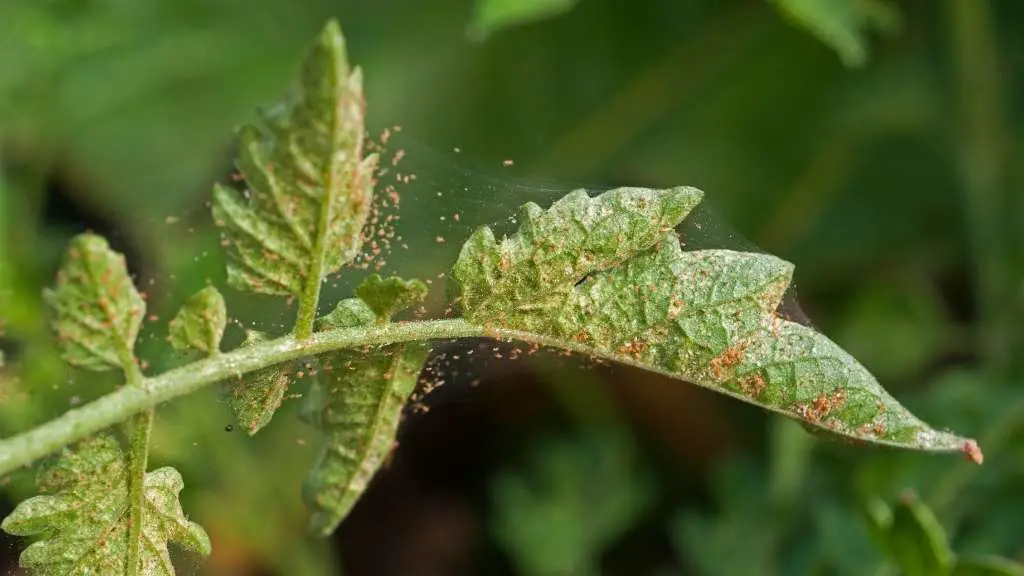
Signs of mites include pale spots on the leaves and a general lack of vitality. Although the bugs themselves are too small to see, you can look for tiny spider webs under the leaves and at the joints where the leaves come off the stem.
Aphids
The aphid is a familiar scourge to every experienced gardener. Small in size, but formidable in their numbers, these juicy pests can quickly bring a vegetable garden to its knees. Just like bamboo mites, aphids suck the liquids from the bamboo and cause it to languish and wilt.
The worst thing about aphids is their astonishing rate of reproduction. They multiply so quickly that I’ve heard some people say they are born pregnant. Of course, that can’t be true, but their populations still seem capable of exploding overnight. By the time you become aware of them, their colony is probably already out of control.
The good news — if you can call it that — is that these critters can be easily spotted by the naked eye. These are small, soft-bodied creatures that surround the under-leaves of plants. But you’ll often see the ants before you notice the aphids because the two species enjoy a symbiotic relationship. The ants actually farm the aphids for their sweet honeydew. Such cooperation may sound lovely, but it’s the bane of nearly every gardener. The sticky residue they leave behind is something utterly detestable.
Aphids can easily be removed by spraying high-pressure water on the leaves of plants, but they might not stay away for long. Mix the water with low-impact chemicals or essential oils for greater protection. I like to mix up some soapy water, which can effectively suffocate the aphids.
Mealybugs
Mealybugs are another common pest that can infest your bamboo garden. In great numbers, they cause the bamboo leaves and stems to distort and discolor, leaving them stunted and causing them to wither. Just like aphids and mites, mealybugs are sap suckers that feed off the essential fluids of your plants.
As these nasty vermin proliferate, they form what look like little cotton balls. But if you touch it, you’ll notice it’s a bit sticky like spider webbing. What you thought was soft and fuzzy like cotton turns out to be a revolting swarm of bugs.
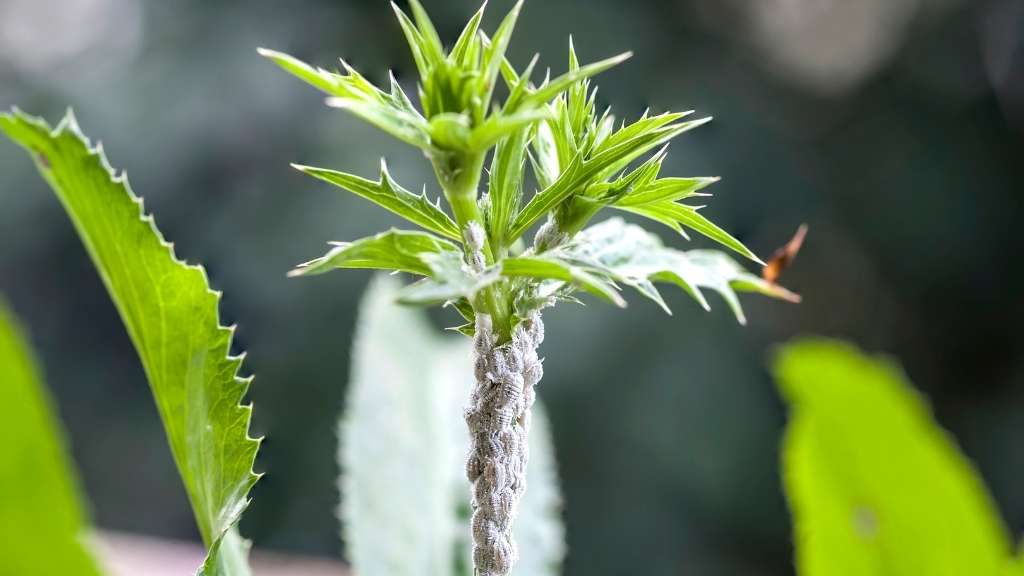
Like other pests, the presence of mealybugs will affect the well-being of your plants. In great numbers, your bamboo will turn pale and stunted. If the infestation is not treated, it could eventually cause your bamboo to die.
Mealybugs prefer warm weather, and they often gather on indoor plants, where the conditions tend to be more warm and comfortable than the natural outdoors. This is one reason why growing bamboo indoors is not such a good idea. In warm, humid climates, they will infect outdoor plants, too.
Fight fire with fire, I say. So I’ll take a soft, cotton-tipped Q-tip and dip it in rubbing alcohol. Then I’ll daub everything on the plant that also looks like a soft, cotton tip. This treatment needs to happen repeatedly, over the course of a few weeks, or else the mealybugs will just common back. If they persist after several weeks, you’ll need to find a more systemic solution that addresses the root of the problem.
Termites
That’s right! Not only do these creatures infest homes but also the bamboo. Termites build their nests inside the culms or canes of the bamboo. By the time you notice the presence of termites, the plant will have been dried out. This is how termites can be lethal to the health of bamboos.
This is not a common problem for most bamboo growers, only in regions where subterranean termites are known to thrive. They generally find the roots of your well-irrigated bamboo grove and then work their way upwards through the inner working of the plant.
Like ants, the termite colony usually has one or more queens who lay vast numbers of eggs. Because their activities and reproduction take place primarily on the inside of your bamboo, you probably won’t even know until it’s too late.
Termites are of the greatest concern when working and building with harvested bamboo. To keep these pests from boring through your building materiel, there are various methods for treating the bamboo.
Bigger pests
Little bugs and insects aren’t the only things that can eat your bamboo. You might also have to watch out for wildlife.
In this category, deer and rodents will probably be your greatest enemies. Unless your neighbor happens to have a pet panda bear. And actually, there are quite a few wild animals that rely on bamboo as their primary source of sustenance, including mountain gorillas and golden monkeys of Africa, and bamboo partridges of Southeast Asia. But chances are, you won’t need to worry about these in your suburban garden.
These larger feeders, like rates or deer, will generally be most interested in the fresh, tender shoots that come up early in the growing season. Or if you have a dwarf, groundcover type of bamboo, a herd of unusually hungry deer could potentially devour your foliage pretty quickly.
And make sure there are no rodents, including gophers, mice and voles, nesting in your roots. Bamboo likes a good thick mulch, but too much mulch could provide a cozy shelter for these unwelcome visitors who like to burrow.
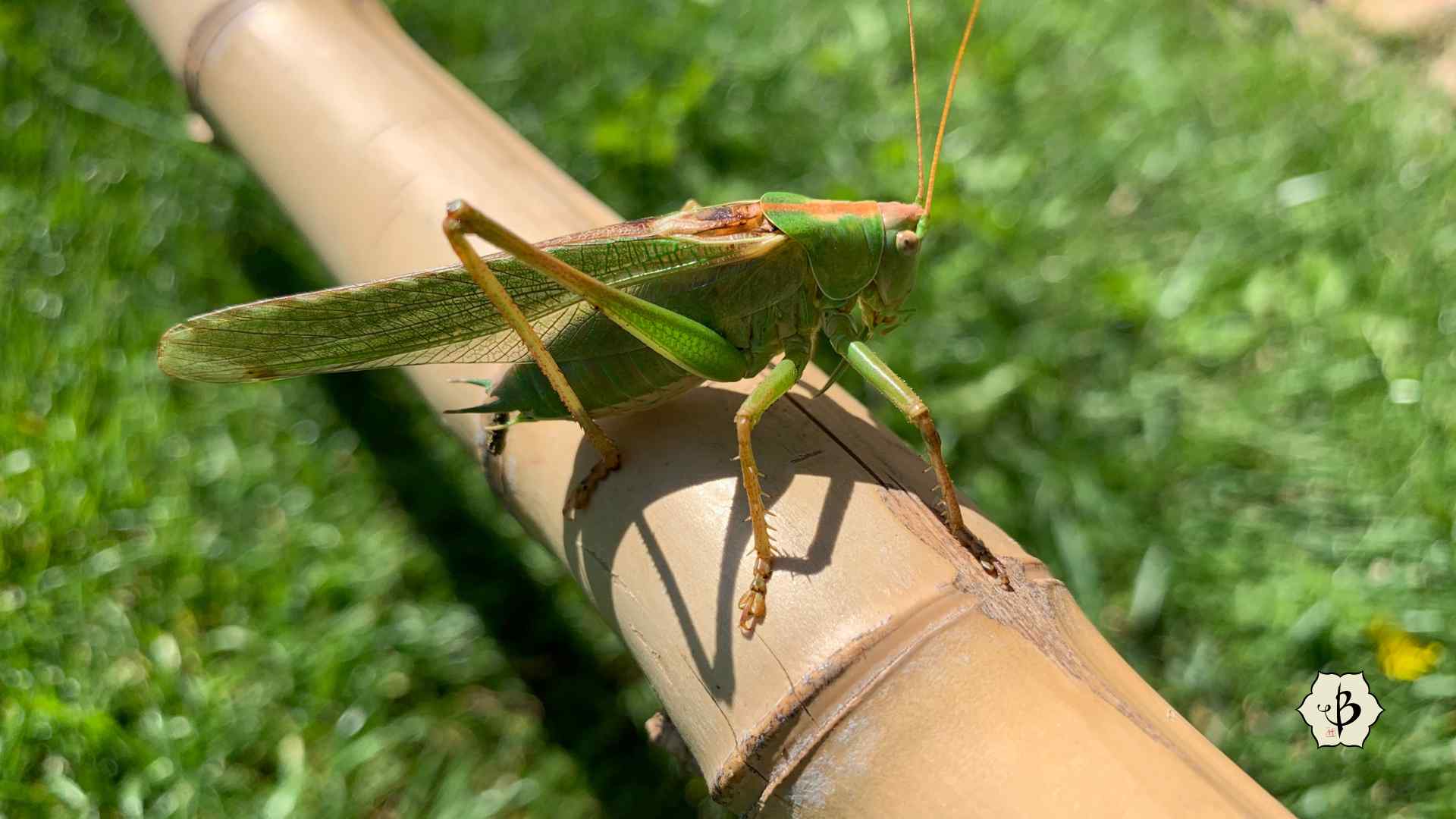
Bamboo diseases to be aware of
Apart from the wide variety of insects that might find your bamboo irresistibly delicious, root rot and fungus and two other closely related issues to be on the lookout for.
Bamboo root rot
One of the worst things to happen to your bamboo plant is a bad case of root rot. This is almost invariably the result of overwatering or poor drainage or both.
We know that bamboo is a grass, and if you have grass in your yard, you probably have to water it regularly. We also associate bamboo with tropical places like Thailand and Indonesia, where tropical rainstorms are common. With these factors in mind, it might be natural to assume that bamboo requires copious amounts of water. But that’s not actually true.
In fact, some species of bamboo need a lot more water than others. As a general rule, the roots like to be moist, but not soggy. And some varieties of bamboo are fairly drought-tolerant. But one thing is sure, bamboo does not like to stand in water. There are one or two species of “water bamboo” that can survive immersion in water for more than a few days, but eventually, even they will rot and die.
At the end of the day, it’s easier to kill bamboo by overwatering than by underwatering. Starved of water, bamboo will languish, but when it finally gets more water, it can recover fairly quickly. Bamboo that’s been soaking in soggy soil, on the other hand, will develop root rot, often indicated by the presence of mushrooms. And once that sets in, the road to recovery will be long and painful.
Root rot is most common with potted bamboo, which can be easy to overwater. Also, potted plants frequently have a tray, and when there’s water standing in the tray, the roots probably can’t dry out all the way. And, worst of all, the roots in a bamboo pot can easily get bound up and overcrowded, making it hard for the water to pass through. Healthy soil needs drainage and aeration, otherwise, the plant will suffer.
When in doubt, dry it out. Typically, the bamboo leaves will curl slightly to indicate that it’s in need of water.
Fungus
If you’ve explored my website, you already know I’m a fun guy. But there’s nothing fun about getting mold on your culm. And if you start finding mushrooms growing around the base of your bamboo, you know you’ve got a problem.
The natural world has an enormous variety of fungi, some of which are detrimental and some of which are downright delectable. Fungus could take hold underground, and lead to root rot, or it could form in patches on the canes. In almost every instance, fungus is the product of excessive moisture.
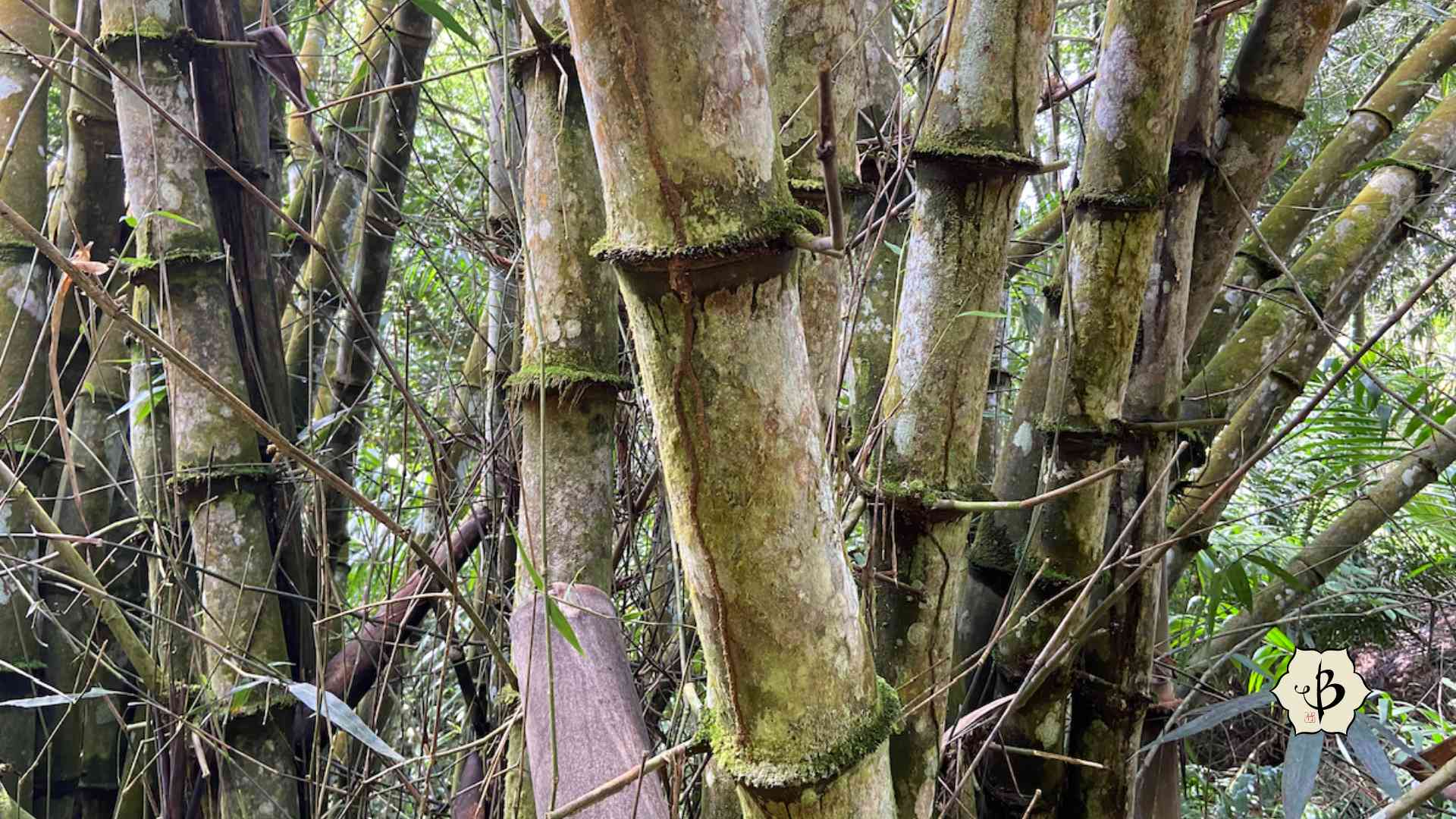
As explained above, the bamboo roots and rhizomes need drainage and will not tolerate a soggy soil medium. But in tropical environments, there might also be too much humidity in the air. And while you can’t do much to reduce the relative humidity, you can take steps to promote better ventilation.
The best thing to do here is to thin out your bamboo. When the culms are overcrowded, there won’t be enough ventilation, and the plants will become susceptible to mold and insects. Also, over the years, the culms will naturally age and dry out. Eventually, they will begin to rot. You want to clear out those aging culms before they start to rot and turn into a bug motel.
Other symptoms of bamboo stress
Because some insects, like mites, are too small for the human eye to observe, it helps to watch out for other signs and symptoms. Here are a few common ailments you might observe.
- Leaves lose their color and vibrancy. The leaves are the best indicator of the plant’s health. If they turn yellow or pale, or they are dropping and not growing back, you know there’s a problem. It could be pests, but it could also be too much direct sun, or not enough, or it might need fertilizer.
- Leaf tips are turning brown. (See image below.) This is a common symptom, but it’s probably not from insects. More likely an imbalance in the soil, not enough nutrients, or maybe too much fertilizer.
- Fresh shoots are low in numbers or lacking in size and vigor. This is a sure sign that the bamboo is unhappy, but it could be the result of any number of problems. Take a close look at the leaves for signs of insects. Check the soil and see if it’s too wet. Ask yourself when was the last time you fertilized. If it’s in a pot, it could be time to transplant.
Natural and chemical remedies against bamboo pests
The good news is that bamboo is naturally pretty resistant to pests. Unlike other shrubs and vegetation with soft stems and fleshy leaves, bamboo is simply not that appetizing. The stems are hard and woody, and the leaves are thin and papery. This produces a fine aesthetic, but not a mouth-watering meal. The predators will have to be pretty desperate to find this appealing, or else the plant will have to be weak and languishing already.
Chemical solutions
The home and garden marketplace is literally saturated with chemical pesticide products for poisoning insects. They all promise to remove the insidious plague and return your garden to its former glory.
But as a man of principles, I can’t endorse any of those products. I promote bamboo because of its long list of environmental benefits. I recommend organic fertilizers, like compost and manure, and natural pest remedies as well.
Natural remedies
Words like natural, organic and non-toxic can mean a lot of things. The natural world is filled with poisonous compounds, from mushrooms to berries. But I do my best to avoid toxic chemicals in the garden, so these are some of the methods I prefer to use.
Rubbing alcohol, which I mentioned above, is one of those borderline cases. Is it natural or is it a chemical? Either way, I use it sparingly. In any case, too much rubbing alcohol is going to kill your plants. But at the end of a Q-tip, you can massacre mealybugs and other pests one by one. When the infestation is serious but localized, this could be an effective first step. But in a field of bamboo, it’s not a practical method.
With more widespread infections of small insects, soapy water is one of the most popular remedies. Mix some non-toxic soap, like Dr. Bonners, with warm water and put it into some sort of spray bottle. This way, you can go around the garden and spray liberally, anywhere you see or suspect insects at work. The soap forms a membrane on the water surface and effectively suffocates the bugs. At the same time, the soapy water is harmless to the plants.
A similar technique is to mix some essential oil, like oregano, clove or lemongrass, and spray that solution. These oils contain natural acids and compounds that can be deadly to insects, but harmless to plants.
Keep in mind with these solutions, the liquid is harmless to the surface of the plant, but it’s not suitable to water the plants with. Also, these methods generally provide a short-term solution by removing the bugs that are present. But it doesn’t guarantee they won’t come back. It’s frequently the case that the insects are merely a symptom of some other, more fundamental imbalance.
One more strategy, very similar to the soapy water and the essential oil infusions, is a good spraying of compost tea. The powerful admixture is usually strong enough to kill the pests. Unlike the other sprays, this formula isn’t just harmless, but will actually be very beneficial to the plant’s metabolism. (See the next section about Prevention as the best solution.)
Avoid any spraying during midday when the sun’s rays are intense, as the water drops in the sunlight can cause burning on the leaves.

Bamboo vinegar as a natural pesticide
Bamboo vinegar is an amazing product that has only recently gained popularity. When bamboo is dried or cooked through pyrolysis to make charcoal or biochar, there’s a liquid that comes out. This liquid is a very acidic acid, but unlike other kinds of vinegar that are fermented, bamboo vinegar is pyrolytic. It’s something like liquid smoke.
This kind of vinegar is not to be used for salad dressing, but it makes a very effective pest repellant. Bamboo vinegar is cleaner than other types of wood vinegar, very high in silica but low in tar and other volatile compounds.
You can find Seek Bamboo Vinegar on Amazon, a highly concentrated vinegar, with a pH of around 2.7 to 3.1. This is extremely acidic, so it needs to be diluted. The standard ratio is about 5 mil per gallon of water. If you spray it directly on the plant, the liquid tends to bead up and roll off. So a good trick is to mix it with a surfactant, that is, something that will break the surface tension and allow the solution to spread evenly and stay on the leaves. A teaspoon of eco-friendly liquid soap will do the job pretty well.
Keep in mind, bamboo vinegar, like most natural pest remedies, won’t annihilate insects the way some toxic pesticides do. But they discourage insects and drive them away. Usually, these kinds of applications need to be done on a consistent basis, to deter the pests.
Prevention is the best solution
The best way to keep your plants free from insects is by keeping them healthy in the first place. Proper watering and feeding are critical to maintaining healthy, well-balanced soil. When the soil gets out of balance, or the plant gets weak and sickly, the pests can detect their vulnerability. They sense a weak plant and attack. So insect infestations are often actually a symptom of some other systemic problem.
If the soil is out of balance and the plant is malnourished, the other remedies will only bring temporary relief. The bugs and pests will keep returning to the scene of the crime.
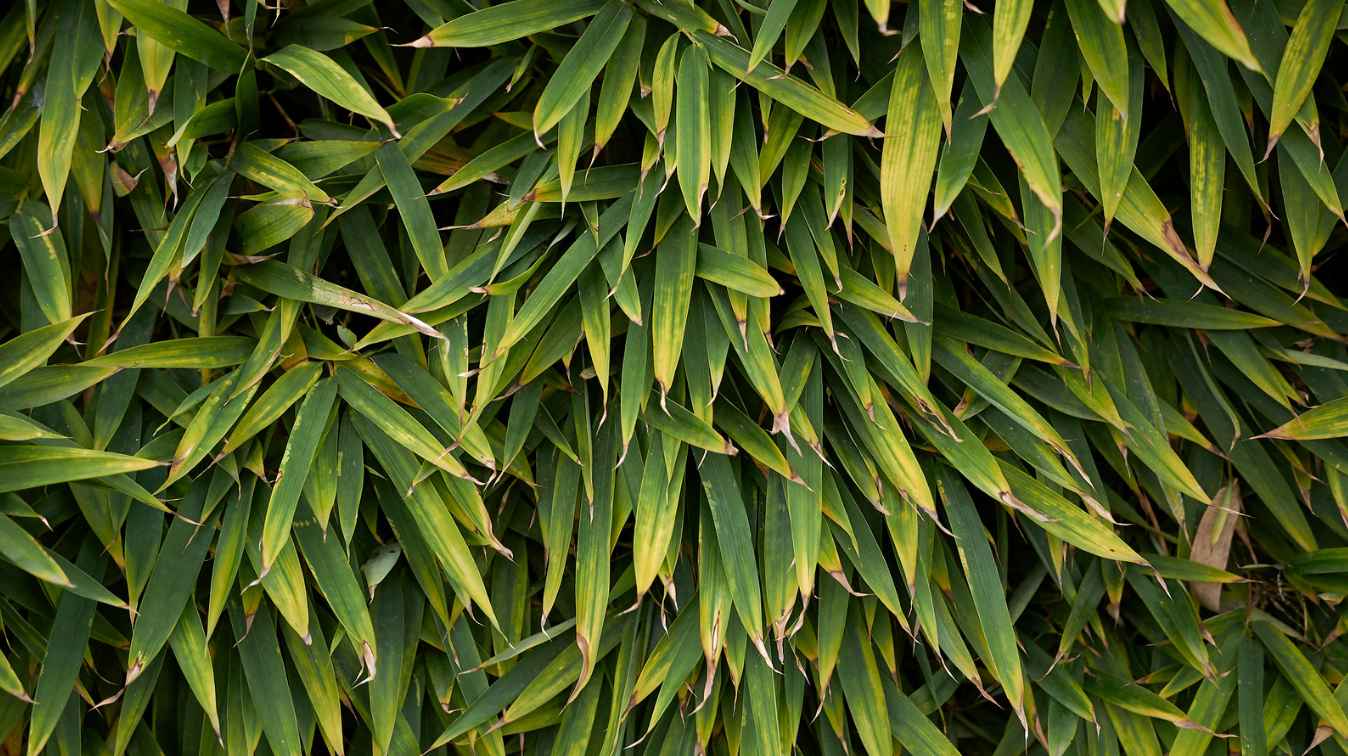
Rather than spraying the garden sporadically with some short-term pesticide, try feeding the pants with nutritious compost or aged manure from horses or chickens on a regular basis. Meanwhile, irrigate moderately, and give the plants time to dry thoroughly in between waterings.
Lastly, spend time with your plants. When you pay attention to them, you’ll be more likely to detect pests before they get out of hand. Make a habit out of pruning your bamboo on a regular basis. Monitor the roots and see that they’re healthy but not spreading helter-skelter. And think out excessive branches and aging culms. This doesn’t just improve the appearance of your garden, but it also increases airflow and makes the area less hospitable to insects and other burrowing critters.
Want to know more about growing bamboo?
Our website is loaded with thorough, well-researched articles about everything related to growing and enjoying bamboo in all its forms. To learn more, check out some of these other in-depth articles.
- The ultimate bamboo grower’s guide
- 10 Best bamboo varieties for your garden
- Growing bamboo indoors
- How to treat bamboo for building
- Watering your bamboo
- Fertilizing your bamboo
- 6 Common mistakes people make with bamboo
PHOTO CREDIT: Damage from mites on bamboo leaves. Photo by Fred Hornaday.


























Large patch. Never hurt before. Now all brown leaves. Happened during this winter. Has endured heavy snows and heavy ice in the past. Black birds have been nesting at night for several years. Patch where we’re got our start, very old, had also done this. Miles apart. New growth this spring is skinny.
Sounds like some frost damage. Some horse manure or chicken manure might be in order.